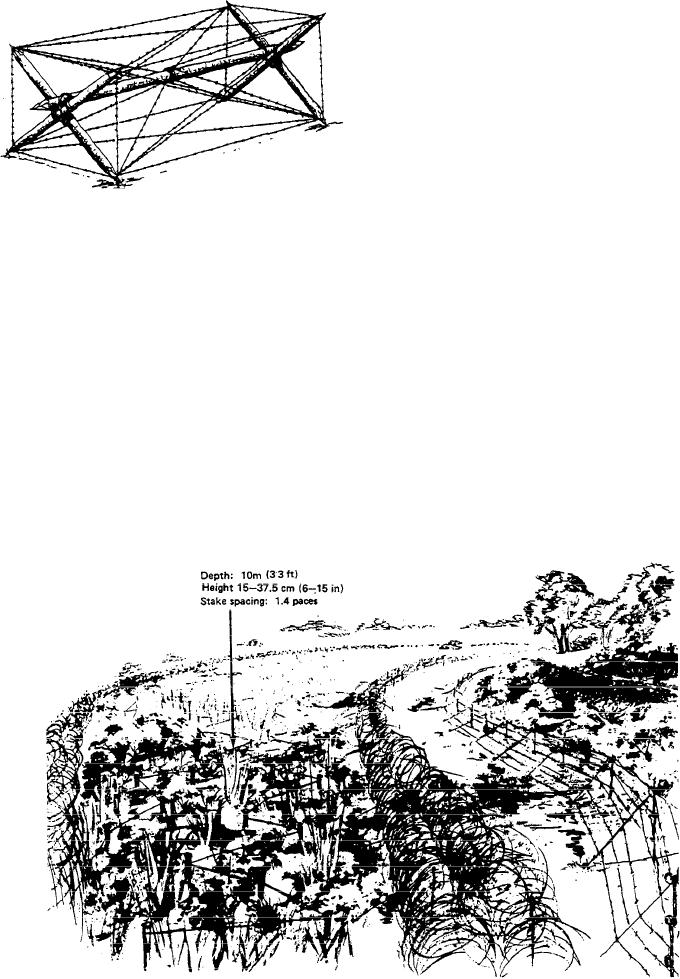
Spirals of Loose Wire
By filling open spaces in and between wire
entanglements with spirals of loose wire, the obstacle
effect is substantially increased. Men are tripped,
entangled, and temporarily immobilized. Spirals for
such use are prepared as follows:
1. Drive four 3.3-foot posts in the ground to form
a diamond 3.3 by 1.6 feet.
2. Wind 246 feet of barbed wire tightly around the
frame. Start winding at the bottom and wind helically
Figure 8-33.--Knife rest.
toward the top.
3. Remove the wire from the frame and tie it at
or marshland. This fence is wired with six strands of
quarter points for carrying or hauling to the site where
barbed wire on the enemy side, four strands on the
it is to be opened and used. One spiral weighs less than
friendly side, and four strands on the base. In snow, the
20 pounds and a man can carry three or more of them
tripods can be lifted out of the snow with poles or other
by stepping inside the coils and using wire handles of
means to reset the obstacle on top of newly fallen snow.
the type furnished with the standard concertina.
On soft ground, the base setting of tripods and the base
wires give enough bearing surface to prevent the
4. If spirals are needed in large quantities, mount
obstacle from sinking.
the diamond-shaped frame on the winch of a truck and
use the winch to coil the wire.
PORTABLE, BARBED-WIRE OBSTACLES
Knife Rest
Standard concertinas are readily moved and are well
adapted for the temporary closing of gaps or lanes, or
The knife rest (fig. 8-33) is a portable, wooden or
for adding rapidly to the obstacle effect of fixed barriers,
metal frame strung with barbed wire. Use it wherever a
readily removable barrier is needed; for example, at
such as the double-apron fence. Other portable,
lanes in wire obstacles or at roadblocks. With a metal
barbed-wire obstacles are described below.
Figure 8-34.--Tanglefoot in barrier system.
8-20

